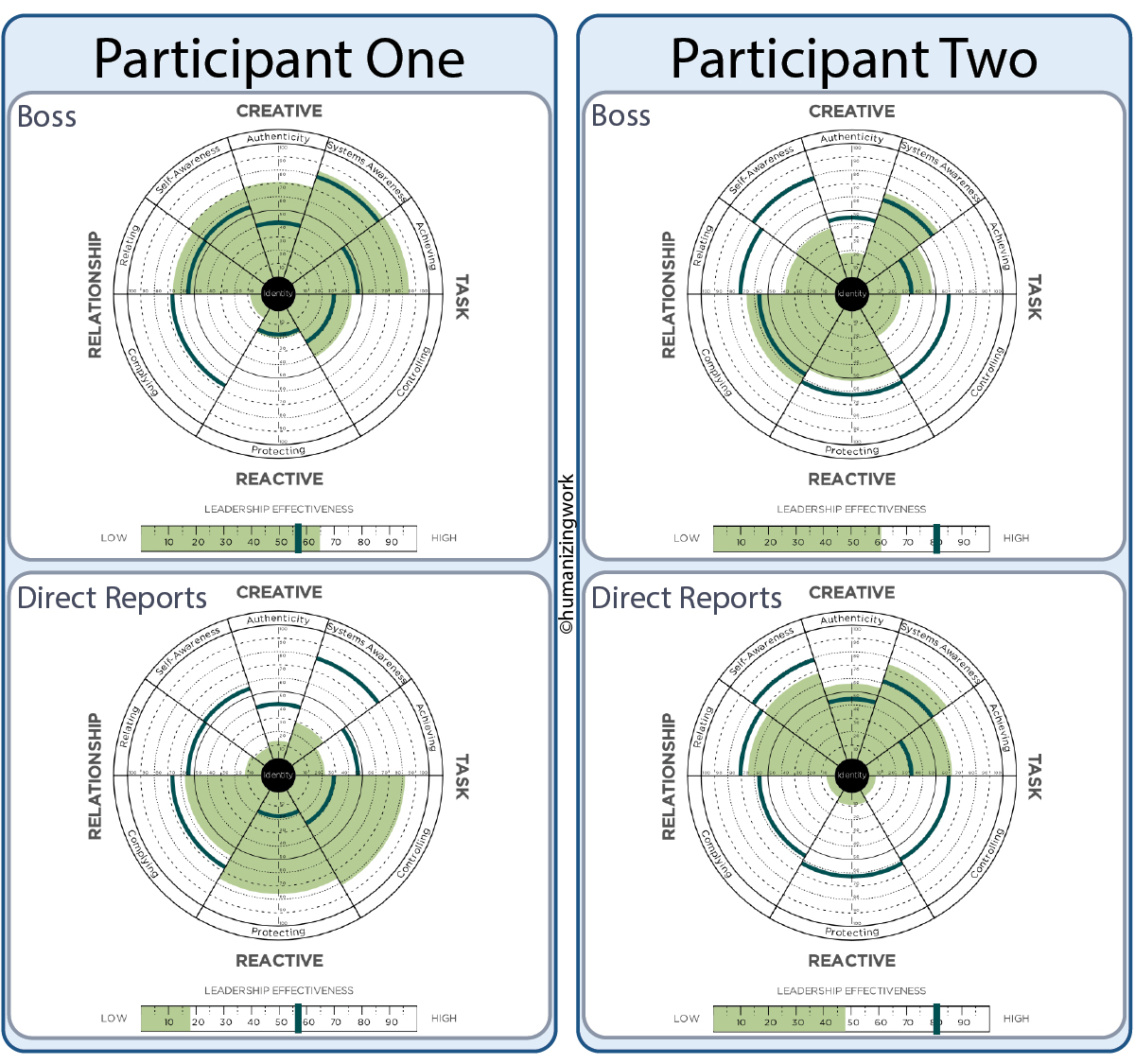We recently finished a large batch of Leadership Circle Profile coaching sessions for one of our clients.
A common pattern when leaders get feedback from direct reports, peers, and their own leaders is that different groups give strikingly different feedback.
For example, one leader we coached was perceived by his boss and peers as visionary and strategic, leading with a good sense of the big picture. This same leader scored low on those capabilities in feedback from his direct reports, who described him as tactical and reactive.
Another leader was rated highly on leadership effectiveness and praised as a selfless, collaborative leader by her directs, while her peers and boss described her as ambitious and not particularly effective.

When we get conflicting feedback in a 360 like this, leaders often want to fight with the feedback:
“That group just doesn’t understand what I’m really like. Is that my problem?”
“Maybe my directs just didn’t understand the questions.”
“Well, my boss doesn’t appreciate me.”
Any of those arguments could be true. However, a leader who manages to explain away unpleasant feedback misses an opportunity to become more effective.
Perception isn’t exactly reality—that first leader either has the capability of crafting and communicating a vision and strategy, or he doesn’t. Just because his directs don’t see that capability doesn’t mean it’s not there. What it does mean, though, is that he hasn’t been using that capability in the context of his team. And that’s useful feedback.
His direct reports weren’t saying, “you’re not visionary.” They were saying, “we don’t experience you as visionary.”
Once the leader stopped arguing with that feedback and got curious about it, it became clear that his conversations with his boss and his peers naturally focused on bigger, more strategic topics. And he shined in that context.
But when he talked with his team, he fell victim to the Curse of Knowledge cognitive bias, where the vision felt too obvious to him to need to mention it. Conversations with the team stayed in the weeds. Tasks needed to get done. Fires needed to be put out.
This leader realized he needed to bring that visionary part of his leadership to the table more at the team level. He saw that he could have a more effective, engaged team if he connected the dots between the day-to-day work and the larger outcomes it creates. (And they’d experience him as a better leader along the way!)
In your work, do some groups get to experience a stronger version of you than others do? Effective leaders bring those different experiences into alignment.
Interested in going deeper on leadership effectiveness? Here are a couple of opportunities to do that:
- The Leadership Circle Profile (LCP) is a leadership assessment that measures and provides leaders feedback through the lens of a validated and powerful model. More information and register here.
- Join Humanizing Work’s next Leadership Intensive Series. Over 4 engaging half-day workshops and 4 practical group coaching sessions, we’ll do a deep dive on the concepts, skills, and tools leaders need to lead empowered teams and individuals effectively. You’ll level up your ability to give direction, delegate effectively, and develop the team, all without micromanagement. More information and join the wait list here.
Last updated